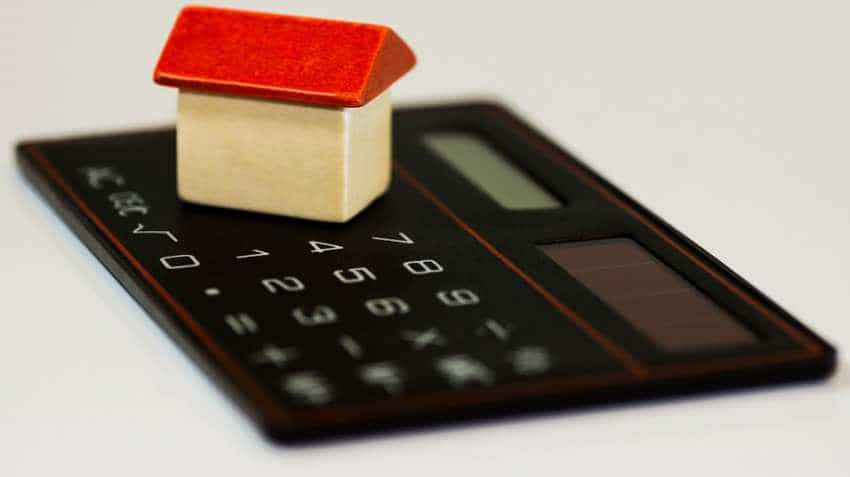Your home, personal and car loan EMIs may become cheaper, if RBI does this
Over the past few years, India’s household saving rate has declined sharply and the household financial savings rate has been largely stagnant.

There is a curious pattern taking birth at a greater speed in the banking system, and this one is the rise in the gap between their credit growth and deposits. What has happened is that, while the bank continues to enjoy good credit growth, their deposits have remained lacklustre. Now, this directly impacts the EMIs you pay on the home loan, personal loan and car loans. Interestingly, analysts at Kotak Institutional Equities, reveals much shocking picture, where household savings rate has been largely stagnant despite high real interest rates in the economy. This can create an issue for RBI and their credit policy decisions ahead, and that is why Kotak believes intervention is much needed.
Over the past few years, India’s household saving rate has declined sharply and the household financial savings rate has been largely stagnant.
According to Sanjeev Prasad, Suvodeep Rakshit and Anindya Bhowmik analysts at Kotak Institutional Equities, decline in household physical saving rate has been due to some combination of (1) continued high consumption by households, (2) low job creation in general and (3) increase in financial liabilities of households to support short-term consumption.
The trio added, “ This is quite puzzling and poses large challenges to India’s policymakers already besieged with the problem of high credit-deposit ratio in the banking system. We are not sure about the reasons for this anomaly but would note that household financial liabilities have increased sharply over FY2016-18.”
In Kotak’s view, RBI may have to cut CRR to manage the rising gap between high credit growth and low deposit growth. India’s real interest rates are already quite high by historical standards and they have failed to galvanize financial savings as discussed above.
Currently, the cash reserve ratio (CRR) is at 4%. Notably, this is one of the factors which impacts your lending rates. Any change in CRR by RBI has a major impact on banks, and if your financial institution is not happy well then surely you are set to face heat.
CRR is the ratio of cash, which a bank has to keep it reserved with RBI. Simply put, just like you make deposits with the bank, similarly, your bank makes a deposit to RBI. That deposit is said as CRR.
For example - For every Rs 1,000 deposit, a bank will have have to keep cash reserved with bank which would come at Rs 40 at 4% CRR. This means a bank will not be allowed to use this Rs 40 for lending or any purposes. Also, that does not mean a bank will be allowed to use the remaining Rs 960 entirely, as they further have to meet other predetermined proportions of deposits set by RBI.
Take note, that banks also do not earn interest on these deposits as CRR.
#AajKaBazaar | मजबूती के साथ बंद हुआ बाजार, समझिए दिनभर के बाज़ार का हाल रजत देवगन से।@AnilSinghviZEE @devganrajat9 @dkalra81 pic.twitter.com/FqV7Xc2s41
— Zee Business (@ZeeBusiness) March 11, 2019
Hence, when RBI increases CRR, this would mean lesser fund with bank as they have to park more money. When there is cash shortage at bank’s end, such would lead to increase in lending interest rates. Also, banks will have to borrow from RBI for funds, and to recover the interest they pay to the central bank, the lender will revise its own loan interest rates.
Therefore, a cut in CRR can come as a relief to banks, as more money will be in their hands and better room for in fact reducing the floating interest rate of home, personal and car loan.
Also, it needs to be noted that, CRR has remained unchanged at 4% for quite few years now, and hence, a cut from RBI’s end will be a good call.
The trio at Kotak also said, “ Real interest rates will come down anyway as inflation will pick up over the next few months from current low levels. A cut in policy rates may do little to reduce interest rates given rising deposit rates. The government and RBI are hopeful of PSU banks (especially the erstwhile PCA banks) accelerating credit growth given their comfortable CDR positions. The RBI may want to review the current CRR level; banks have enough safety buffers in the form of (1) high-quality liquid assets under LCR system and (2) surplus SLR.”
05:12 PM IST






 Good news for loan borrowers of this bank - Interest rates slashed
Good news for loan borrowers of this bank - Interest rates slashed Three-month home loan EMI waiver hailed by realty sector; what they said
Three-month home loan EMI waiver hailed by realty sector; what they said Have EMIs to pay? WAIVER relief for home loan, auto loan takers! No need to pay for 3 months
Have EMIs to pay? WAIVER relief for home loan, auto loan takers! No need to pay for 3 months Home Loan Calculator: Four benefits that you would miss in new income tax slabs
Home Loan Calculator: Four benefits that you would miss in new income tax slabs New Income Tax Slabs: Good News for those on rent! This tax exemption can still be claimed
New Income Tax Slabs: Good News for those on rent! This tax exemption can still be claimed